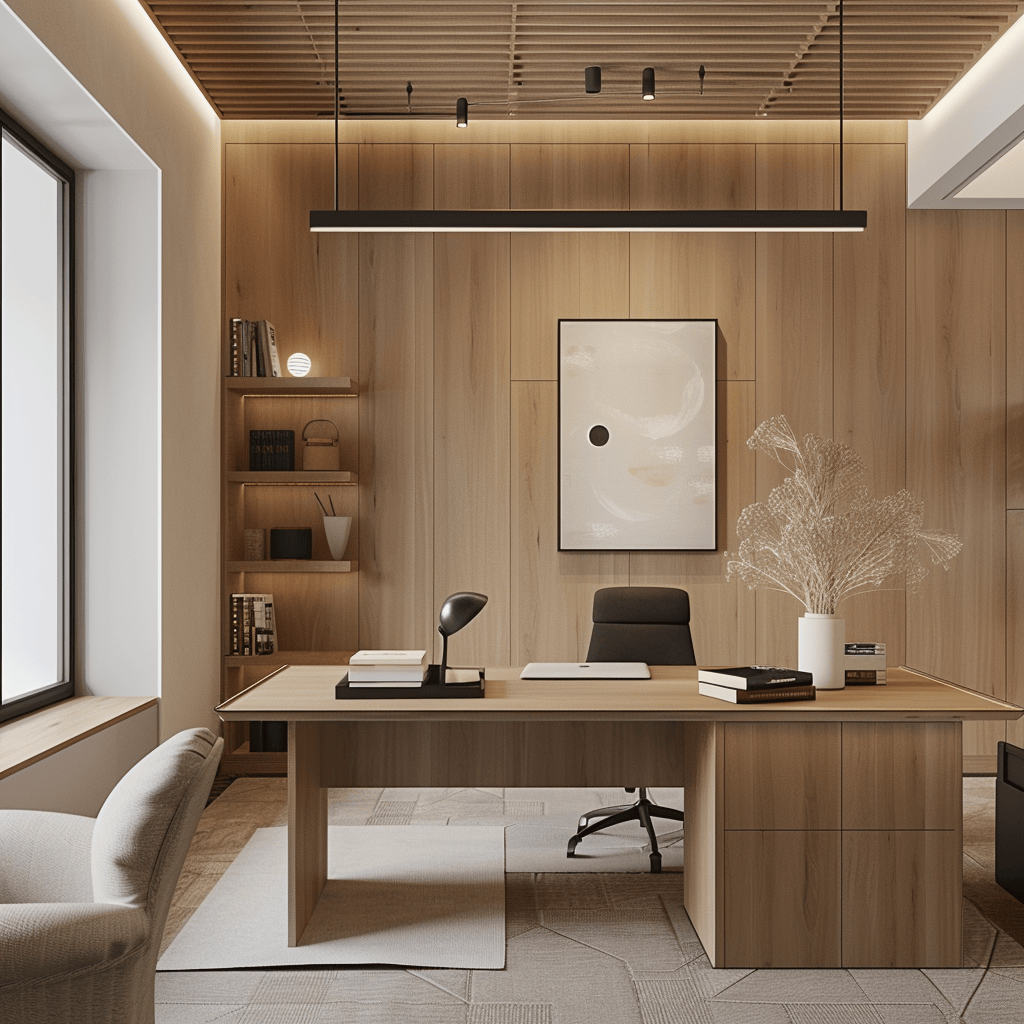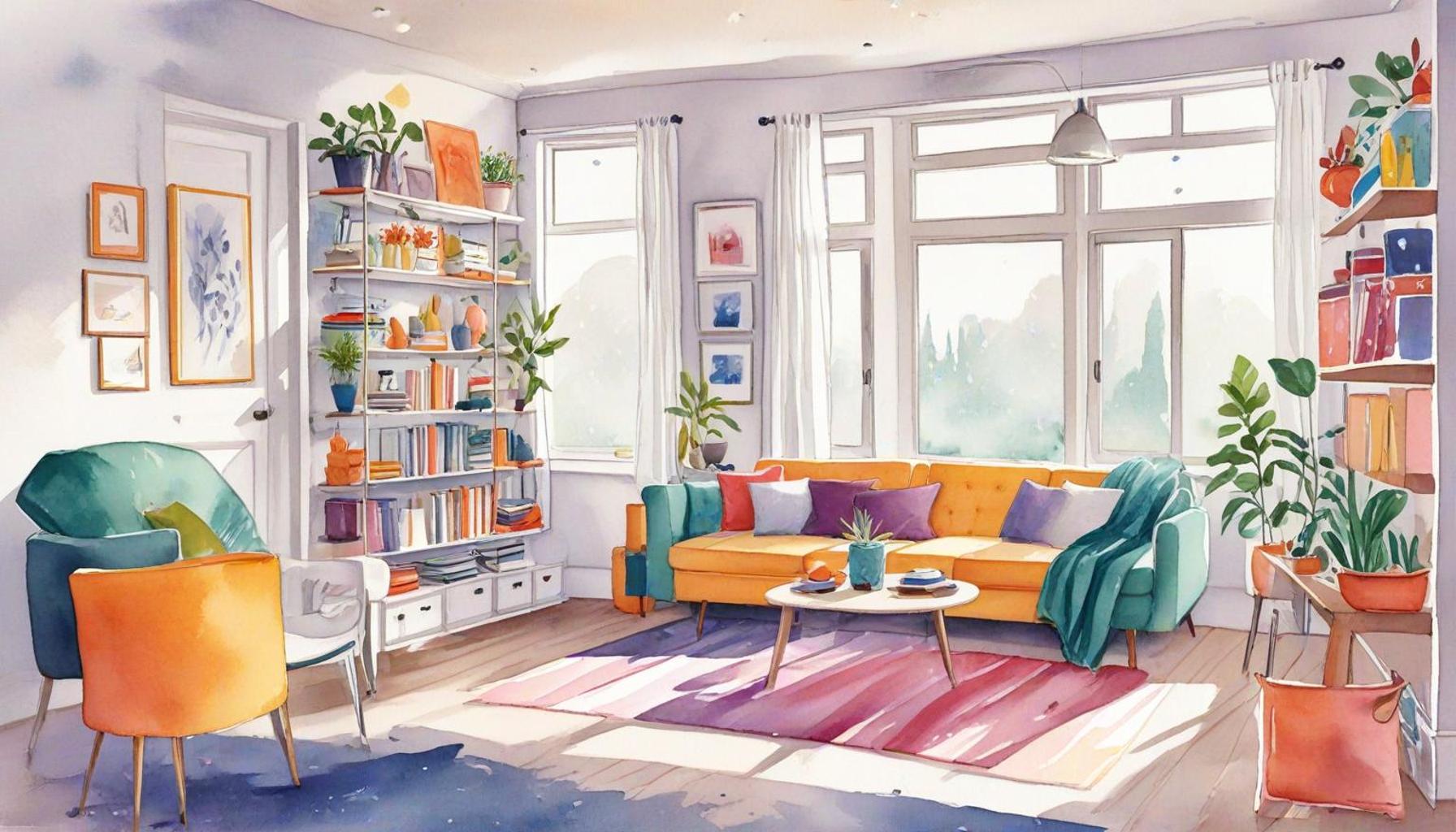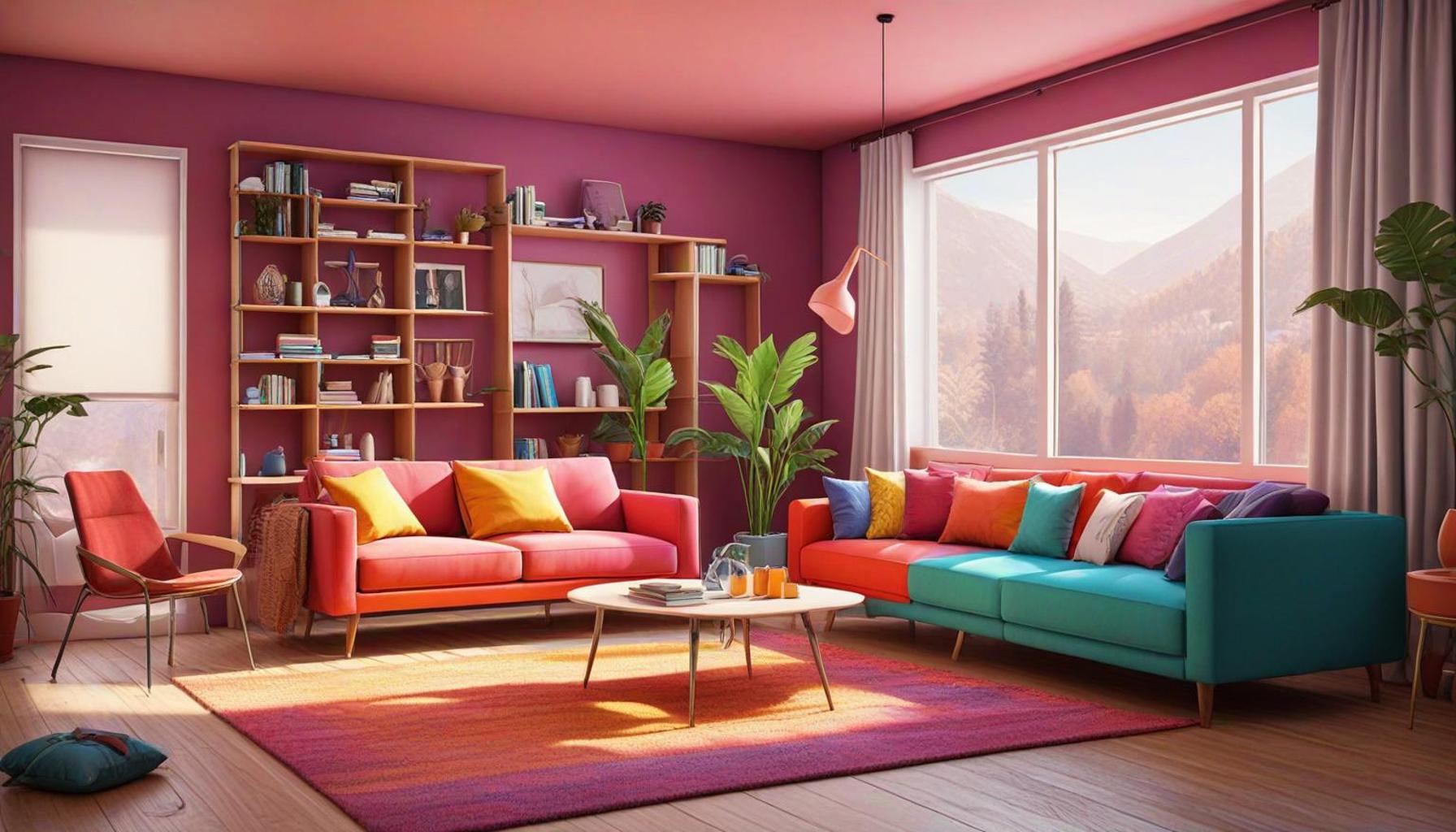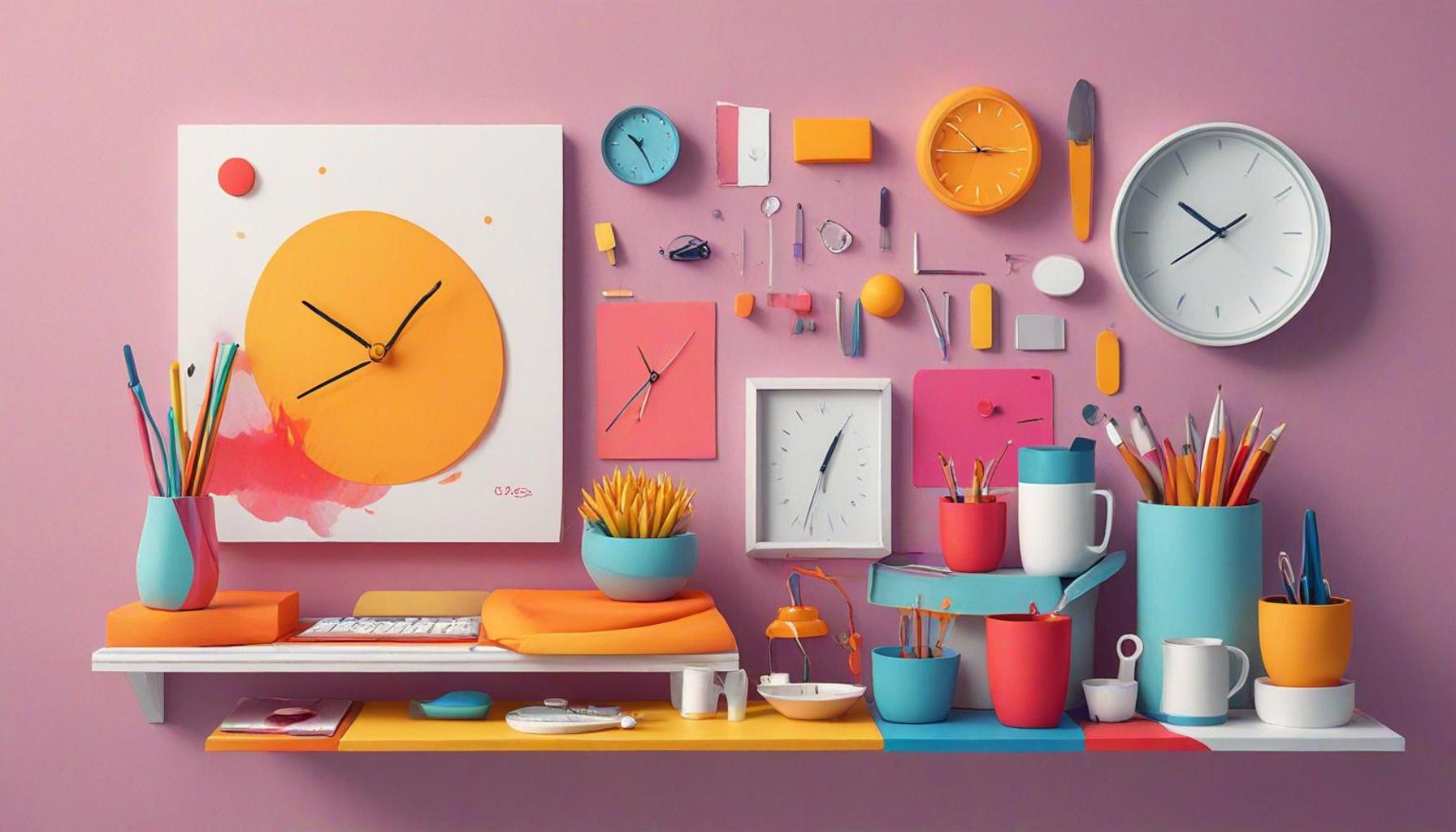The Impact of Intentional Design on Stress Reduction in Minimalist Work Environments

The Shift Towards Minimalist Work Environments
As organizations navigate the complexities of modern corporate culture, the emphasis on employee well-being is more pronounced than ever. Stress has become an inherent part of many workplaces, prompting businesses to rethink their environments. One innovative solution that has emerged is the concept of intentional design within minimalist workspaces, designed to mitigate stress while enhancing productivity.
The Elements of Minimalist Design
Minimalist design transcends mere aesthetics; it incorporates strategic choices that prioritize functionality and tranquility. Some of the most impactful features of such designs include:
- Open layouts: These spaces eliminate barriers, promoting collaboration among team members while simultaneously reducing visual clutter. For instance, companies like Google and Facebook have adopted open floor plans to foster communication, leading to innovative brainstorming sessions and enhancing teamwork.
- Natural lighting: Exposure to natural light has profound effects on our mood and energy levels. Research from the U.S. Department of Energy shows that workplaces flooded with daylight not only enhance workers’ happiness but can also increase productivity by as much as 15%. Imagine walking into an office that mimics the soothing qualities of sunlight instead of harsh fluorescent lighting.
- Thoughtful color palettes: The colors used in a workspace greatly affect psychological responses. Soft blues and greens, for example, are known to elicit calmness and focus, thereby encouraging a serene atmosphere conducive to concentration and creativity.
These elements collectively contribute to achieving a harmonious balance in the workplace, allowing employees to perform at their best. The convergence of intentional design and employee well-being is not just theoretical; it is backed by empirical evidence. Various studies indicate a significant decrease in stress-related symptoms among employees who work in intentionally designed spaces, with reports suggesting reductions of up to 30%.
The Growing Trend in the U.S.
As organizations across the United States increasingly recognize the merits of minimalist design strategies, it is imperative to understand their broader implications for employee experience. Companies are beginning to invest not only in aesthetic changes but also in creating environments that prioritize mental health and well-being. For example, major firms in Silicon Valley have pioneered the integration of biophilic design elements—features that reconnect people with nature—into their workplaces. These practices foster a sense of peace and belonging, further enhancing job satisfaction and employee retention.
Investing in intentional design goes beyond mere trend adoption; it reshapes the workplace ethos. The movements towards these calming, efficient spaces create a ripple effect, inspiring companies across various sectors to implement tailored solutions that prioritize the health of their employees. As we delve deeper into the intersection of design and well-being, we uncover innovative insights that are poised to redefine the future of work in America.

DISCOVER MORE: Click here to delve deeper
Understanding the Psychological Benefits of Minimalist Design
The implementation of intentional design in minimalist work environments reveals fascinating insights into its impact on employee mental health. By carefully curating workspace elements, organizations can create an atmosphere that not only looks appealing but also significantly influences emotional well-being and cognitive performance. The connection between environment and psychological state has been emphasized in numerous studies, illustrating that reduced sensory overload leads to lower stress levels and higher productivity.
One of the fundamental principles of minimalist design is the reduction of visual and auditory clutter. In bustling workplaces filled with distractions, employees often struggle to concentrate, leading to heightened stress and diminished performance. By employing strategically-designed spaces, companies can create environments that promote focus and tranquility. Key features contributing to this effect include:
- Quiet zones: Designating specific areas for silence or contemplation can provide employees with the opportunity to recharge mentally. These zones, often adorned with comfortable seating and soft acoustic materials, allow for a momentary escape from the hustle and bustle of regular office activities.
- Mindful materials: The choice of materials in the workspace can deeply affect mood and comfort levels. Organic and sustainable materials, such as wood and natural fibers, create a warm and inviting atmosphere that promotes calmness and reduces anxiety.
- Flexible spaces: Incorporating multifunctional areas that can be easily adapted to various needs—from collaborative brainstorming sessions to quiet work areas—allows employees to manipulate their environment based on their task requirements, thus enhancing comfort and efficiency.
Moreover, the transition towards a minimalist design approach has garnered significant attention due to its correlation with improved mental health outcomes. Research conducted by the International Journal of Environmental Research and Public Health indicates that employees working in minimalist, intentionally designed spaces report higher levels of job satisfaction and lower instances of burnout. Specifically, businesses that embraced these design principles witnessed a remarkable 25% decrease in reported anxiety levels among staff.
Interestingly, these advancements are not limited to tech giants or Fortune 500 companies; small and medium-sized enterprises across the nation are also adopting intentional design strategies. For example, a recent survey revealed that 70% of small businesses are re-evaluating their layouts to incorporate minimalist principles aimed at enhancing employee wellness. This shift reflects a broader recognition of the link between environmental factors and workplace performance.
As minimalist design continues to gain traction, understanding its psychological benefits becomes paramount for organizations striving to prioritize employee health. Clearly, the impact of intentional design on stress reduction in minimalist work environments is more than a trend; it represents a fundamental shift in how we approach modern workspace functionality and employee experience.
The Importance of Intentional Design in Minimalist Spaces
Intentional design in minimalist work environments plays a critical role in reducing stress and enhancing productivity. By carefully curating spaces that prioritize simplicity and functionality, designers can create environments that foster calmness and focus. The use of natural light, neutral color palettes, and uncluttered layouts can significantly impact employees’ mental well-being. Research indicates that individuals who work in intentionally designed minimalist spaces report lower levels of anxiety and higher overall job satisfaction.
Natural Elements and Visual Appeal
Incorporating elements such as greenery or natural materials can enhance the aesthetic value of workspaces while promoting relaxation. Biophilic design, which connects people with nature, has been shown to improve mood and cognitive function. Simple design features, like large windows or indoor plants, can lead to a more serene atmosphere, positively affecting employees’ psychological health. This approach not only reduces stress but also stimulates creativity and collaboration.
Flexibility and Functionality
Another essential aspect of intentional design is the flexibility it provides. Minimalist environments often utilize modular furniture and open layouts that can adapt to the needs of the workforce. This flexibility allows for different work modes, whether individuals need to focus deeply on tasks or collaborate in teams. By accommodating various work preferences, organizations can reduce frustration and promote a sense of agency among employees, further contributing to stress reduction.
| Advantages | Impact |
|---|---|
| Reduced Clutter | Leads to improved focus and less distraction. |
| Enhanced Natural Light | Promotes a healthier work environment and improves mood. |
| Biophilic Design | Increases creativity and reduces psychological stress. |
| Flexible Work Areas | Encourages employee engagement and adaptability. |
The integration of these design principles cannot be overstated; they fundamentally reshape the way we interact with our environments, providing not just a workspace, but a sanctuary that promotes well-being and productivity. Engaging with the subject of intentional design unlocks further potential within the minimalist workspace narrative, encouraging organizations to invest in thoughtful designs that serve their workforce’s mental health needs.
DISCOVER MORE: Click here to learn about conscious consumerism
Enhancing Employee Well-Being Through Thoughtful Layouts
Beyond aesthetic appeal, the layout and flow of a minimalist workspace significantly influence the psychological state of employees, contributing to stress reduction. A thoughtfully designed office takes into account the natural movement of people, ensuring that every space promotes a sense of ease and functionality. Implementing open layouts can facilitate collaboration and communication while simultaneously providing designated areas for individual focus, thus marrying the collective and solitary aspects of work.
In a study published in the Journal of Environmental Psychology, researchers discovered that layouts which encourage social interaction without overwhelming employees with noise or chaos lead to enhanced creativity and a greater sense of community among team members. The ease of communication in these environments minimizes the friction often experienced in traditional cubicle setups, effectively lowering stress levels. This approach resonates particularly well in the context of modern American workplaces, where teamwork and collaboration are increasingly prioritized.
Moreover, visual connections between different areas of the workspace can reduce feelings of isolation. Long sightlines and transparent divisions, such as glass walls, allow employees to feel connected to their surroundings, promoting positive social dynamics without sacrificing privacy. This method not only diminishes feelings of stress but also fosters a sense of community that is vital in fast-paced work environments.
The integration of nature into minimalist spaces also plays a pivotal role in stress reduction. Incorporating elements such as indoor plants, natural light, and views of the outdoors has been linked to lower cortisol levels, a hormone associated with stress. Numerous studies, including one published in the Journal of Physiological Anthropology, have shown that exposure to green spaces promotes a calming effect and can improve overall mental health. Organizations that prioritize biophilic design—an approach that seeks to connect people with nature—often see improvements in employee satisfaction and performance as well.
Furthermore, embracing technology in intentional design allows for enhanced personalization of workspaces. Tools that enable employees to control their own lighting, temperature, and acoustic settings empower them to create an environment conducive to their individual needs, leading to reduced stress. For instance, the implementation of smart lighting systems that adjust to natural light levels can promote alertness during work hours while encouraging relaxation in personal spaces.
The trend of remote work has also paved the way for organizations to rethink their space utilization strategies. As employees transition between home and office environments, incorporating minimalist design principles can help create continuity in their work experience. More than just a temporary fix, these strategies encourage a holistic approach to employee health and well-being, emphasizing the need for ergonomics and comfort in both settings.
In summary, the impact of intentional design in minimalist work environments is not just limited to basic functionality but extends into the heart of employee experience, fundamentally transforming how workers perceive their surroundings. Through layouts that inspire connection, natural elements that soothe, and technological integration that fosters control, organizations can create spaces that promote mental health and minimize stress, leading to a more productive and satisfied workforce.
DISCOVER MORE: Click here to learn how decluttering can enhance your mental health
Conclusion
In exploring the impact of intentional design on stress reduction in minimalist work environments, it becomes clear that the integration of thoughtful design principles can nurture a healthier and more productive workforce. By emphasizing open layouts that encourage collaboration, along with spaces tailored for individual focus, companies not only enhance communication but also diminish feelings of isolation. Furthermore, the introduction of natural elements such as indoor plants and natural light has been shown to create a calming atmosphere, which significantly lowers stress levels.
As workplaces continue to evolve, particularly in light of trends toward remote work and flexible arrangements, the principles of minimalist design must adapt as well. Organizations that embrace these principles can offer employees a cohesive and customizable working experience. This allows individuals to feel more in control of their environment—ultimately leading to diminished stress and enhanced well-being.
Moreover, the correlation between workplace design and employee satisfaction serves as a pressing reminder for businesses to rethink their spatial strategies. Future investigations into the melding of technology and biophilic design will undoubtedly unearth further innovative solutions aimed at fostering well-being. Ultimately, prioritizing intentional design not only benefits employees but also enhances the overall performance and success of organizations, making it a critical investment in the modern workplace landscape.


